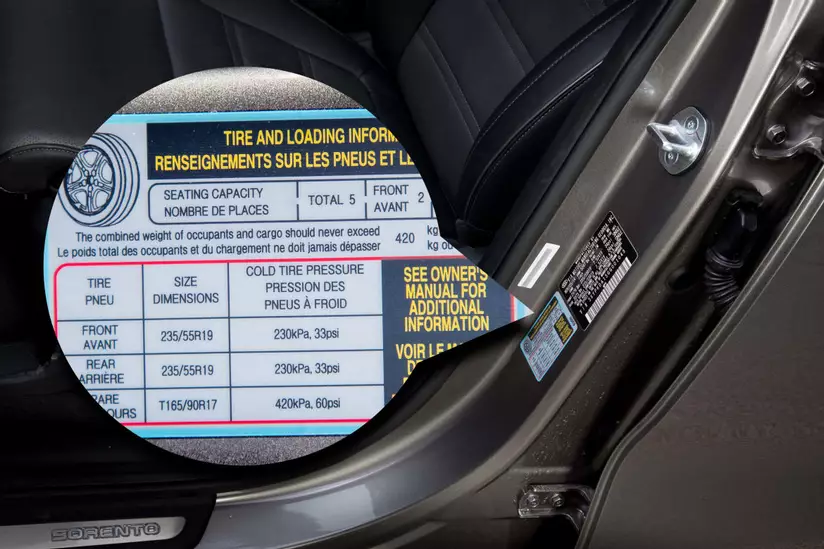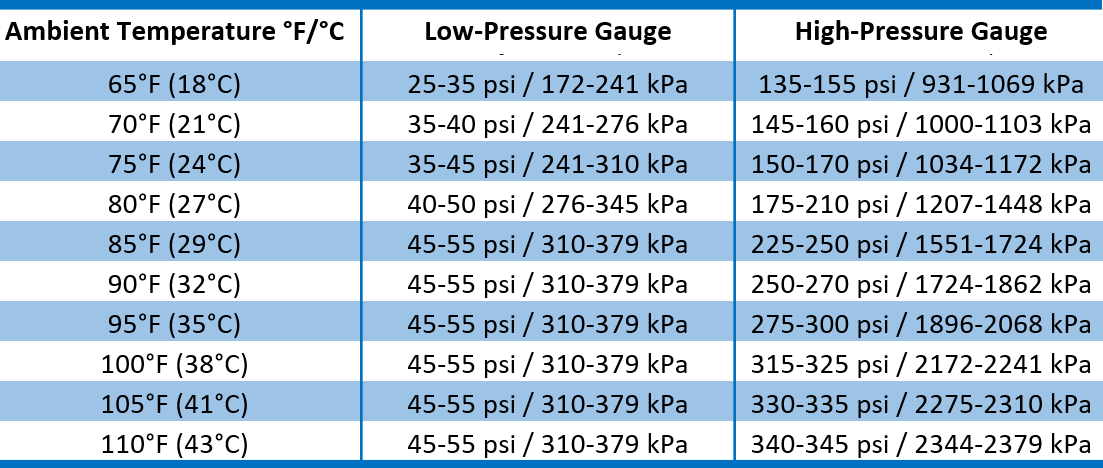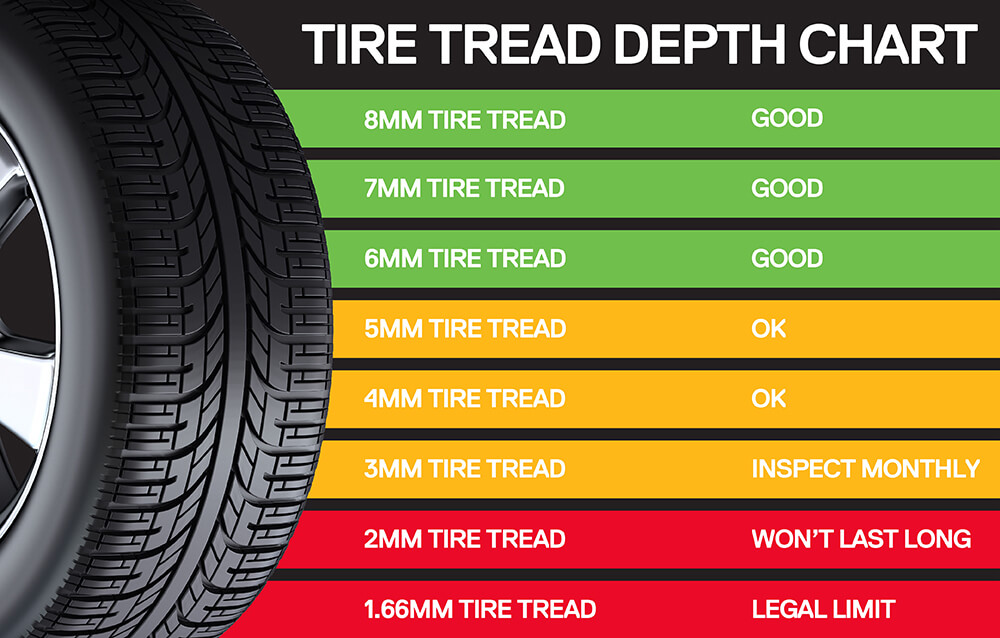Tyre Pressure
Front And Rear Tyre Pressures Chart And PSI Calculation
Tyre pressure can vary on several things, including: * Changes in temperature * Changes in altitude * TimeFor best results, look for a placard on the inside of the driver's door or a similar chart in the owner's manual to determine the recommended.
Finding Correct Tyre Pressure
Recommended tyre pressure, which provides the best mileage, tyre life and handling for the vehicle. In most cases, suitable tyre pressure is written on the car's door.
Tyre inflation pressure is crucial because it affects numerous vehicle and tyre performances such as ;
- Handling
- Braking
- Tyre wear
- Tyre durability
- Tyre rolling resistance
- Fuel consumption
- Greenhouse gas emission
- Ride comfort
- Possible tyre blowouts
- Potential hydroplaning
Average Car Tyre Pressures
Tyre pressure chart for car manufactures( for Sedan Models ).
- Acura( 29.17 )
- Alfa Romeo( 33.3 )
- Audi( 32.13 )
- BMW( 31.22 )
- Buick( 31.41 )
- Cadillac( 32.66 )
- Chevrolet( 29.76 )
- Chrysler( 29.09 )
- Citroen( 29.18 )
- Dacia( 33.42 )
- Daewoo( 31.69 )
- Daihatsu( 32.24 )
- Dodge( 32.99 )
- Jeep( 33.73 )
- Fiat( 31.48 )
- Ford( 29.62 )
- GMC( 32.79 )
- Honda( 32.05 )
- Hyundai( 32.6 )
- Infiniti( 32.98 )
- Isuzu( 32.06 )
- Jaguar( 32.89 )
- Kia( 30.31 )
- Lada( 33.31 )
- Lamborghini( 34 )
- Lancia( 31.78 )
- Land Rover( 33.1 )
- Lexus( 30.86 )
- Lincoln( 29.45 )
- Lotus( 31.22 )
- Mazda( 30.98 )
- Mercedes-Benz( 33.64 )
- Mini( 32.69 )
- Mitsubishi( 30.02 )
- Nissan( 30.34 )
- Peugeot( 30.25 )
- Renault( 30.64 )
- Saab( 29.39 )
- Saturn( 30.55 )
- Seat( 32.21 )
- Skoda( 30.15 )
- Smart( 29.63 )
- Subaru( 33.87 )
- Tata( 33.89 )
- Toyota( 31.44 )
- Volkswagen( 29.17 )
- Volvo( 31.67 )
How To Check Tyre Pressure
Using an air pressure gauge or pressure monitoring system is the basic ways to check tyre pressure. Tyre pressure gauge will immediately let you know the psi of your tyres. You can quickly check the recommended air pressure inside the door to see if your tyres are properly inflated.
What is the ideal Tyre PSI ?

Tyres be inflated to the vehicle manufacturer's recommendations as found on the Vehicle Tyre Information Door Placard or the Vehicle's owner's manual. The placard can be located on the door edge, doorpost, glove box, or fuel door. The recommended PSI should not be confused with the maximum cold inflation pressure that the tire is rated to hold, which is found on the sidewall. We gathered more than 10.000 vehicles and tyre sizes to calculate ideal tyre psi pressure.
Tyre Pressure Chart With Air Temperature

Temperature Grade: is a tire's resistance to heat under controlled testing conditions. From highest to lowest, the grades are:
A Coolest running tire B Warmer running tire C Meets minimum requirements for performance
Tyre Tread Depth

Tyre performance strongly depends on good tread condition, meaning it is necessary to have adequate tread depth to maintain optimal traction on wet roads. Tyre tread should be checked at least once a month for excessive and uneven wear. There are ways you can get a good indication of you tyre tread health:
Tread Depth Gauge The Traditional Penny Test The Quarter Test
Tyre Size Check For Pressures
You can find the recommended tyre pressure for your vehicle tyre size :
Tyre Pressure For Motorcycles
Proper pressure in your tires is quite important. Low pressure can mean unpredictable grip, a greater chance of a flat, or a "squirmy" feeling. None of these is conducive to good riding. Give yourself the benefit of a bike in good fettle. The first and most important point is that you should follow the pressures stated by the motorcycle manufacturer for any particular motorcycle. You can find them in your user manual or on the placard attached to the bike.
Before Ride : WHAT CHECKS SHOULD BE MADE ON MOTORCYCLE TYRES ?
- Tyre tread depth
- Unusual or uneven wear
- Tyre pressure
Tyre Tread Depth
New tires typically start with a tread depth of 10/32" to 12/32", with some off-road tires topping 15/32". New tire tread depth is the measurement typically published by tire manufacturers, but it's not the same as usable tire tread depth. Most states and tire manufacturers consider tires to be bald when one or more of their grooves are worn down to 2/32". So, if you start with a new tire tread depth of 10/32", the actual usable tread depth is 8/32".
Unusual Or Eneven Wear On Tyre
Visually checking your tires for uneven tire wear on a regular basis will alert you to problems that could result in an accident-causing blowout. Irregular tire wear, either across the tire tread or around the circumference of the tire, is an indication that there may a problem that needs to be fixed.
How to check motorcycle tyre pressure ?
Check the pressures when the tyres are cold. As you ride a bike on the road, the tyre warms up, and can increase up to around 0.5 bar (about 7psi) - don't let your tyres down to remove this as they'll be under-inflated when you next ride. Use a quality stand-alone pressure gauge, not the one fitted to your pump, or on an airline.
Check tyre pressures at least once every two weeks when the tyres are cold, using an accurate pressure gauge. You should keep tyres inflated to those recommended in the owner's manual. Sometimes you may find this information on the swing-arm or hugger.
